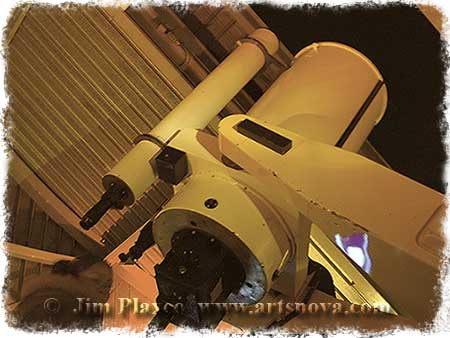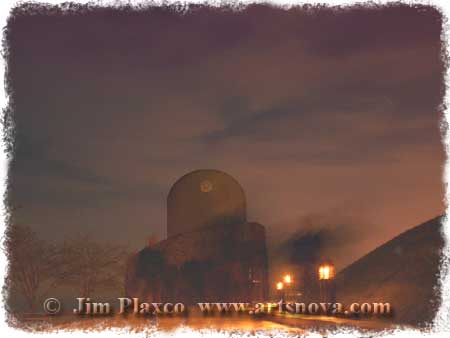Astrophotography and Large Telescopes Workshop

Last night was the first session of the “Astrophotography and Large Telescopes Workshop” class that I am taking at the Adler Planetarium. The class is being taught by astronomer Dr. Mark Hammergren and consists of three three hour sessions. The course description for the class reads as follows:
“Use research-caliber telescopes and specialized equipment to photograph your favorite deep-sky objects! Get hands-on access to the Adler's 20-inch reflector in the Doane Observatory and remote control over the 150-inch reflector at the Apache Point Observatory in New Mexico. Learn to find and photograph faint asteroids, nebulae, galaxies, supermassive black holes and more.”
In last night's class we discussed a variety of topics including:
- competition for observing time at the major observatories
- planning observing sessions at the major observatories
- characteristics of CCDs
- evaluating CCD performance
- quantifying CCD irregularities via bias frames, dark frames, etc.
- instrumentation (visual, IR, spectroscopy, etc.)
- discussion of the telescopes that we will be using
- elementary information on RGB and the creation of color images in Photoshop using the Hubble Space Telescope Eagle Nebula image as the example.
Following the lecture portion of the class we had the opportunity to go outside and see the Doane telescope in action. The Adler's Doane Observatory is home to a 500-pound Cassegrain reflector with a 20-inch (0.5 meter) diameter mirror. The telescope uses a fork-style equatorial mount and its 0.5 meter diameter aperture and 4 meter focal length gives it a focal ratio of f/8 at prime focus. The mirror was created using the spin-cast technique. For instrumentation, there is a Finger Lakes Instrumentation 1024 x 1024 pixel CCD that has a 21 arcminute field of view.
According to Dr. Hammergren, in choosing targets for our Doane observing session we should focus on objects that are at least 30 degrees above the horizon; in the eastern part of the sky; and that are at least 15th magnitude for point sources or 13th magnitude for extended objects. Note that the Doane is open to the public during the planetarium's Far Out Friday events. and for special observing events. Because this was a “Far Out Friday”, we had to be content to wait our turn to get a look through the telescope. The target this particular evening was our own Moon.
The picture at the top of this post was taken as I waited inside the dome for my turn to look through the telescope. Afterwards I headed outside to take some exterior shots of the observatory. One set that I was particularly pleased with was used to create the picture seen below. I dubbed it “Ghosts of Doane Observatory” because of the specter like appearance of the figures.

The second class in the series will be devoted to using the Adler's Doane Observatory for making our telescopic observations, For this class, we will have exclusive use of the observatory. I can only hope that we will have a clear night for our class.
For the third and final class, we will get to use the Astrophysical Research Consortium 3.5-meter Telescope at Apache Point Observatory. In terms of instrumentation, we will be using either the SPICAM (Seaver Prototype Imaging camera) CCD camera or the DIS (Dual Imaging Spectrograph). SPIcam is a SITe 2048×2049 pixel CCD with a 4.78 x 4.78 arcminute field of view with 0.14 arcsecs per pixel. For details see Quick Guide to using Spicam. The Dual Imaging Spectrograph has a 4 x 6 arcminute field of view. Unfortunately I have no additional information about this instrument.
I am looking forward to the remainder of the class and with working on the images that we acquire doing our observing runs.
Ad Astra, Jim
| Return to the Blog Index | This entry was posted on Saturday, November 4th, 2006 at 4:30 pm and is filed under Astronomy.